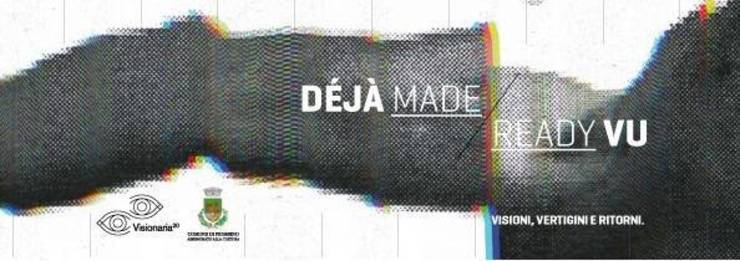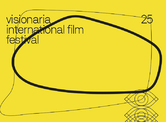The exhibition title is made by playing with a strange connection: the meaning of the french expression déjà vu corresponds to the famous and ironic show Fountain by Marcel Duchamp.
The stunning “global revolution”, displayed by the ready made, actually reminds us the déjà vu phenomenon: being in front of a common object ‘already made’, delivered inside an exhibition, can produce that prying sensation of “déjà vu”. In this situation the viewer is get to a condition of “false recognition” because the object, deprived of its practical duty, acquires a mere esthetic aspect.
The title is focused on a kind of visual art that repeat instead of creating, that recycle instead of producing, that remixes instead of composing. Everything aim to an alienating repetition: taking, copying and reflecting.
However, this kind of artistic process is not to be intended as a sterile condition, but as a particular situation of fertility. The result is very often the production of simple kind of gestures that give an interesting and new point of view on the reality around us. Anyway, the mission of an artist, in every time, is probably exactly this: showing us the reality with a different eye.
Gian Pietro Arzuffi’s works are closely related to the sampling experience. Arzuffi belongs to a wide group of artists who try to subvert the usual equivalence between authenticity and value, by the repetition of works already existing. The only way that makes it possible is by instilling the suspicion into everybody’s mind. In the same direction seems to go Lapo Simeoni’s works that shows how, by turning upside down a single letter of a famous company’s logo, we can obtain an undefined meaning message (ready made “corrected”). Pino Modica, on the contrary, seems more interested in that we can call ‘ready made defined’: in his works light plays an important role revealing a new identity that goes beyond the contingency of everyday life, while gestures are reaching an ideal sphere of meaning. A world of signs in a universe of objects is the context in which it’s possible to place the Paolo Meoni’s'object trouvé'. In his works, photos made by an amateur, the familiar intimacy is abandoned and the mind can go over, reaching an ideal and a general dimension, thanks to the emphasis given by dust and sediments which are set forever inside the image. Apparently Saverio Mercati’s works are only a stylistic exercise: actually the artist manages to show what happens behind the scene, where the light usually does not arrive and does not reveal the true reality. With Franco Menicagli we discover the sculpture naked by any monumental magnificence. The artist, in fact, does not glorify the reality, but he prefers to recycle it in a structure made by beating signs that occupy the vital space around.
In Silvia Negrini's works we can find a repetition of a style which is similar to an archaeological rest. She "plays" with the first videogames made with polygonal graphics, using them in a composition of optical receptors made by the hypnotic movement of a subject that is surprisingly unstable. Marco Pagliardi continues to work on "repetition" by proposing works that subvert the logic process which starts from a matrix and then reproduced this in submultiples. That repetition creates new originals samples and not copies, as the human eye suggests at first sight. A cinematic attraction gets us to an high-class space, where we find the stereotyping characters of Paolo Vegas. Here the main character dances in the centre of scene, ignoring to be looked over by a voyeur and envious doppelgänger. The distance between a copy and its original becomes more and more feeble: that is why Gabriele Di Matteo decides to make a sort of reportage about Neapolitan commercial painting: the representation is very folkloristic, acquiring something magic and astonishing, thanks to colours that change in sounds. From a border line, then, Gianluca Becuzzi organizes the reality in playback. He uses real sounds, changing them in audiovisual representations made by recording and manipulating objects that amplify the everyday life sound.
As a conclusion, we can find an itinerary, composed by memories and echoes, that passes through the video of Francesco Fossati. His work seems to be dedicated to the dawn of theatrical representation, when reflected simulacrums, shadows and lights used to sculpt the reality around the human being. The mirror becomes a sort of ethereal door that mixes the person of the artist with his own native environment.
This contemporary art show inside Visionaria International Film Festival is to be considered as a tribute to the 20th edition of an important event, but even a way to enrich and make bigger the artistic proposal through the works of artists that really refuse to use their eyes as normal people usually do.





















